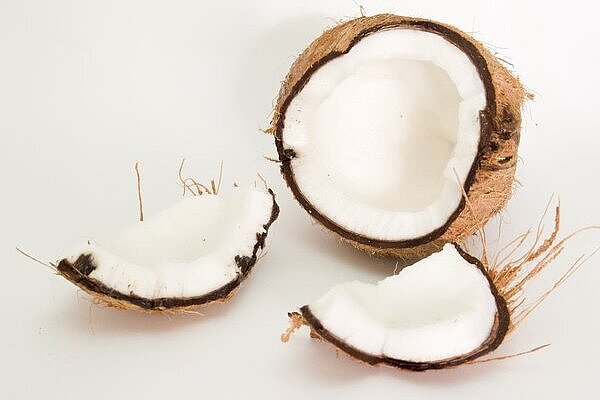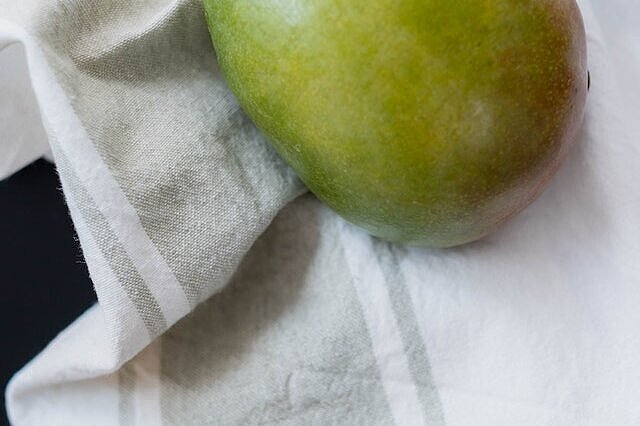Pineapple

What is pineapple?
Pineapple is a plant from the bromeliad family, which is native to South America. The fruit consists of many individual berries that have grown together to form a large cone. The skin is hard and prickly, the flesh is yellow and juicy. Pineapple has a sweet and sour taste.
Pineapple contains many nutrients and vitamins that are important for dogs. These include calcium, magnesium, potassium, manganese, phosphorus, zinc, iodine, iron, vitamin C, biotin, pro-vitamin A, vitamin E, niacin, riboflavin, thiamine, serotonin and tryptophan. The fruit also contains an enzyme called bromelain, which breaks down proteins and aids digestion.
Benefits of pineapple for dogs
Pineapple can have some health benefits for dogs when fed in moderation. For example, pineapple can
- Boost the immune system as it ishigh in vitamin C.
- nourish the skin and coat as it contains biotin and pro-vitamin A.
- protect the eyes and nervous system as it contains vitamin E and niacin.
- support blood formation and metabolism as it contains iron and thiamine.
- strengthen bones and teeth as it contains calcium and phosphorus.
- relax muscles and nerves as it contains magnesium and potassium.
- regulatethyroid function as it contains iodine.
- promote wound healing as it contains bromelain.
- modulate the immune system as it contains serotonin and tryptophan.
- Prevent poop eating as it makes the poop taste unpleasant.
Disadvantages of pineapple for dogs
Pineapple can also have some disadvantages for dogs if fed too much or too often. For example, pineapple can:
- Cause diarrhea or constipation because it contains a lot of fiber, which retains or draws out water in the intestines.
- cause stomach discomfort or vomiting, as it contains a lot of acid, which can irritate the stomach lining.
- Cause allergies or intolerances, as it is a potential allergen that can cause skin rashes, itching or breathing problems in some dogs.
- Promote obesity as it contains a lot of fructose, which can lead to increased calorie intake.
- increase blood sugar levels as it contains a lot of fructose, which can lead to impaired insulin regulation.
- damage teeth as it contains a lot of acid, which can attack tooth enamel.
How much and how often can my dog eat pineapple?
As with all types of fruit, the same applies to pineapple: less is more. Pineapple should only be given as an occasional snack or reward, not as a staple food. The recommended amount depends on the size, weight and health of your dog.
As a rule of thumb, pineapple should not make up more than 10% of your dog's daily calorie intake.
This means that a dog of 10 kg can eat about 15-30 g of pineapple per day, which corresponds to about one or two small pieces. A 20 kg dog can eat about 30-60 g of pineapple per day, which is about two or four small pieces. A 30 kg dog can eat about 45-90 g of pineapple per day, which corresponds to about three or six small pieces.
These amounts are only guidelines and may vary depending on the dog. If you are unsure how much pineapple you can give your dog, it is best to ask your vet for advice. They can also tell you whether your dog can tolerate pineapple or whether it has an allergy or intolerance.
How do I prepare pineapple for my dog?
If you want to give your dog pineapple, there are a few things you should bear in mind to make the fruit tasty and safe. Here are some tips on how to prepare pineapple for your dog:
- Choose a fresh, ripe and organic pineapple. Avoid canned pineapple as it is often high in sugar and preservatives, which can be harmful to your dog.
- Peel the pineapple thoroughly and remove all spines and hard parts. The skin and stalk can be too hard and indigestible for your dog and can lead to choking or intestinal obstruction.
- Cut the pineapple into small, bite-sized pieces. The pieces should not be too large so that your dog can chew and swallow them easily. Pieces that are too large can lead to choking or intestinal obstruction.
- Only give your dog one or two pieces of pineapple at a time. Observe how he reacts to it and whether he likes it. If he shows signs of stomach discomfort, diarrhea, vomiting, allergies or intolerances, you should stop the pineapple immediately.
- Keep the remaining pineapple in the fridge and give it to your dog within a few days. Avoid leaving the pineapple for too long as it can spoil and develop bacteria that can be harmful to your dog.
Pineapple is a delicious and healthy fruit that you can give your dog in moderation. Pineapple contains many nutrients and vitamins that are important for your dog and can have some health benefits, such as strengthening the immune system, nourishing the skin and coat, aiding digestion and preventing fecal eating. However, pineapple can also have some disadvantages, such as causing diarrhea or constipation, stomach discomfort or vomiting, allergies or intolerances, obesity, increased blood sugar levels or dental damage.
Therefore, you should only give pineapple as an occasional snack or reward, not as a staple food. The recommended amount depends on your dog's size, weight and state of health. As a rule of thumb, pineapple should not make up more than 10% of your dog's daily calorie intake.
Properties 6
Are you looking for other ingredients with a specific property?
Just click on them to find more.
If you notice any signs of hypersensitivity or poisoning in your dog, you should see your vet immediately. We are not a substitute for a vet, but we try to be as accurate as possible. Every dog reacts differently and we recommend you get a second opinion or consult your vet if in doubt.
Stay healthy and take good care of your four-legged friend!😊
Similar to Pineapple
Most fruits are safe for dogs as long as you give them in moderation and without seeds or peel. The most popular and healthiest fruits for dogs include Apple: It is rich in vitamin C, potassium,...
Bananas are the fruit of the banana tree, which grows in tropical and subtropical regions. They have a yellow peel that can be peeled off and a soft, sweet flesh. Bananas are rich in carbohydrates,...
The benefits of coconut for dogs Coconut contains many valuable ingredients that can be beneficial for dogs. These include: Lauric acid: This fatty acid has antibacterial, antiviral and antifungal...
What is a mango? A mango is a stone fruit that grows on a tree. It has a yellow to orange color and a sweet taste. The skin of the mango is not edible and must be removed. There is a large pit inside...



